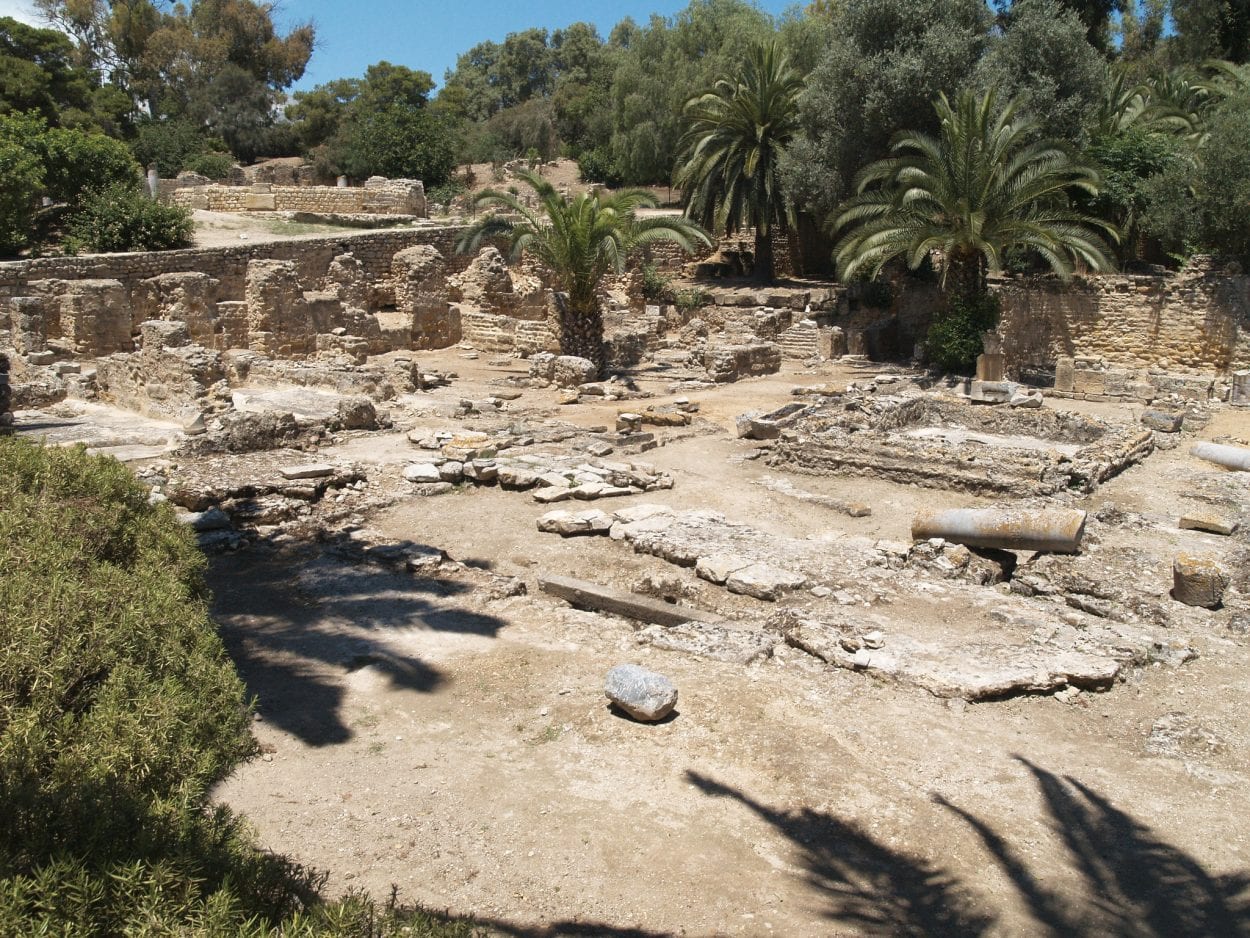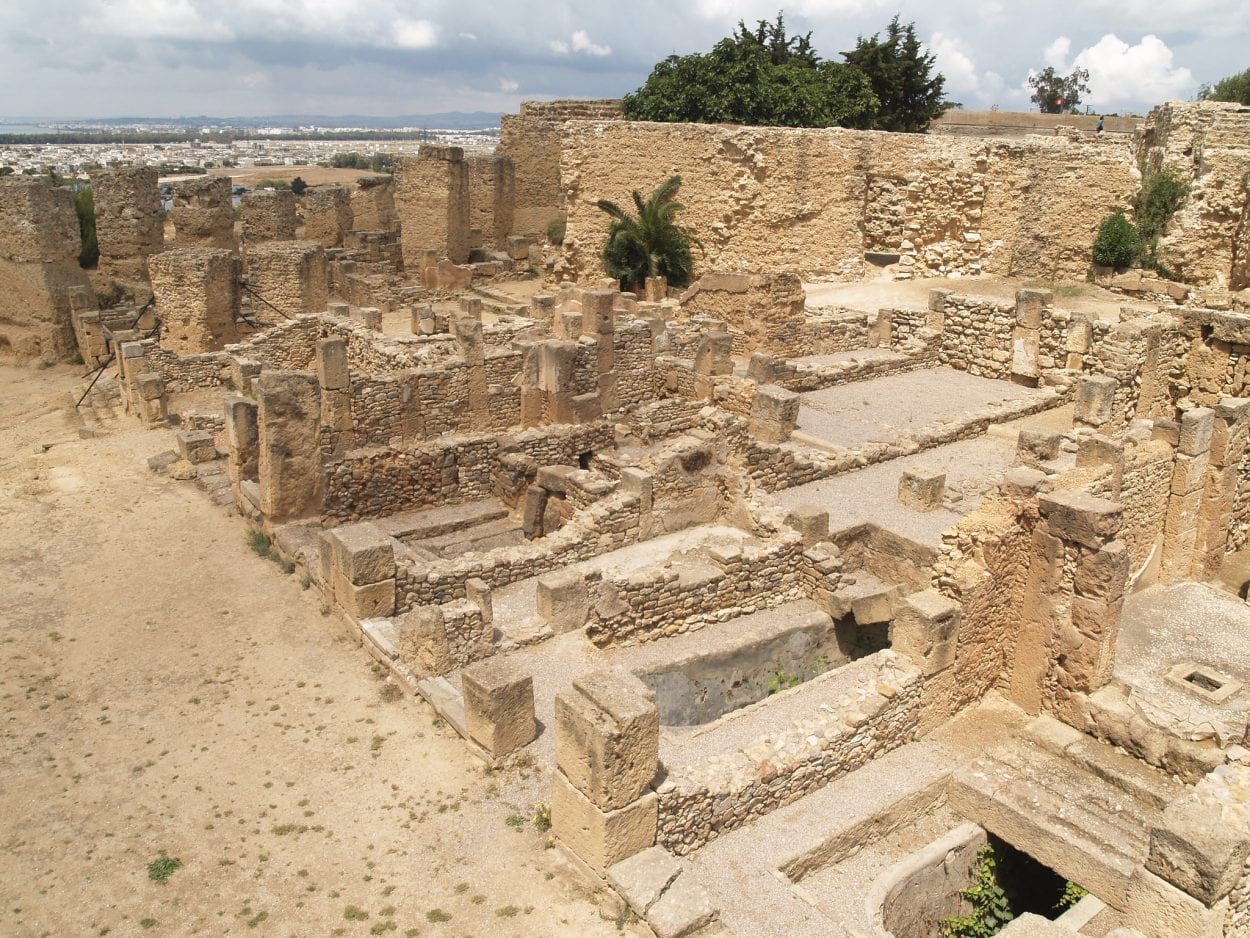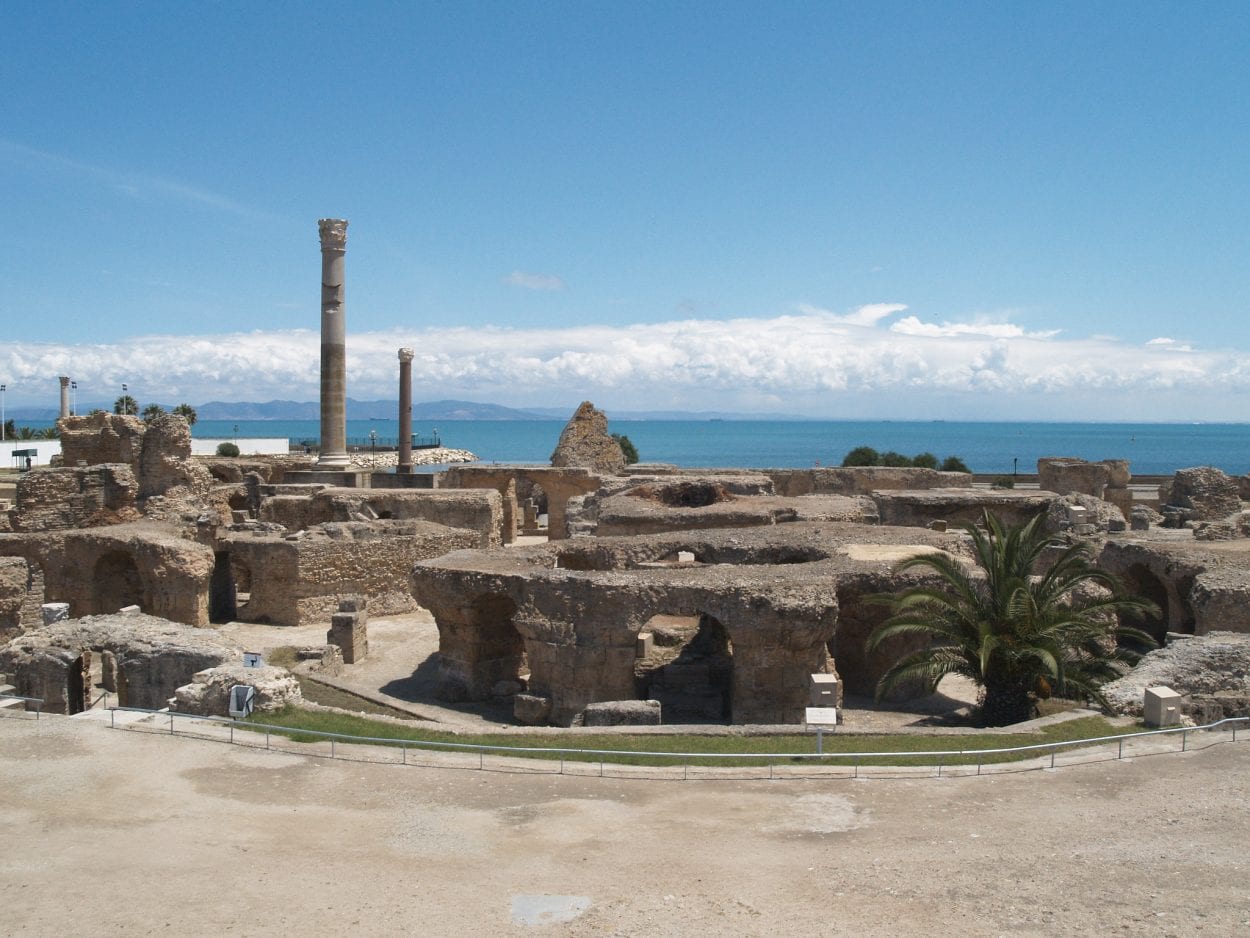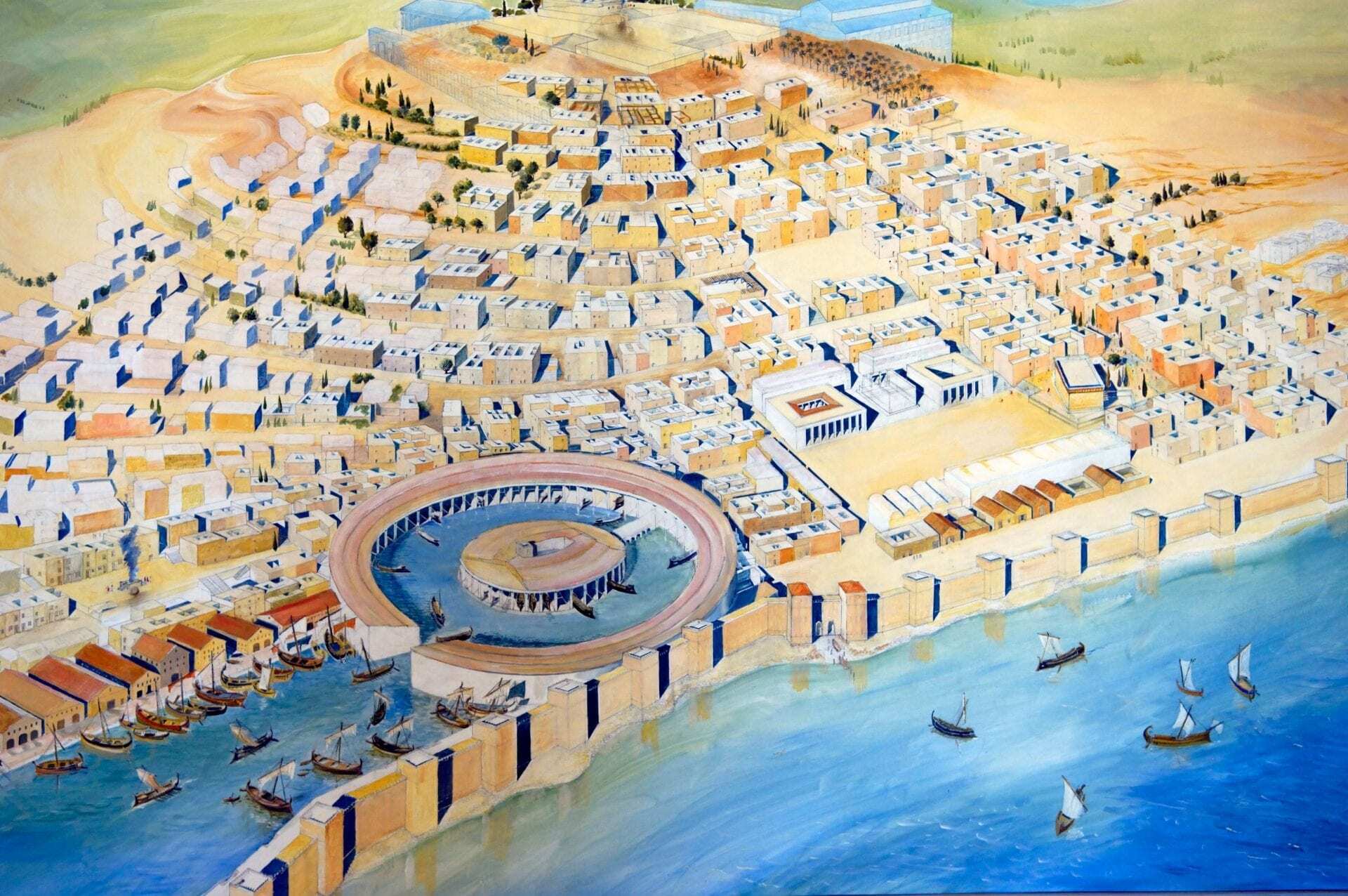Carthage was the capital of the Carthaginian Empire, located on the eastern side of Lake Tunis in Tunisia.
The city was founded as a colony by the Phoenicians, an ancient Semitic-speaking thalassocratic civilisation that originated in the Levant region of the eastern Mediterranean. Although the foundation date is disputed, Timaeus of Taormina, a Greek historian places Carthage’s founding in 814 BC, a date that is generally accepted by historians.
Carthage was built on a peninsular, allowing the city to flourish from maritime trade as ships crossing the sea had to pass between Sicily and the coast of Tunisia. Two large harbours were constructed, one for harbouring a navy of some 220 warships whilst the other was solely for trading vessels.
The city was divided into four equally sized residential districts that were towered over by a high citadel called the Byrsa. Amenities included a theatre, marketplaces, temples, civic buildings, and a large necropolis.

By the 5th century BC, Carthage had expanded its territories and conquered most of the surrounding Phoenician colonies including Hadrumetum, Utica, Kerkouane and Hippo Diarrhytus. Carthage then subjugated Libyan tribes, annexed most of Northwest Africa, and extended its influence into the Mediterranean. Many Greek city-states contested against Carthage for domination over the Western Mediterranean, leading to the Sicilian Wars that lasted from 600 to 265 BC.
With the emergence of the Roman Republic, a sustained rivalry ensured for the dominion of the western Mediterranean. The two powers differed massively in their method of Empire building or expansion.

The goal of Carthage was to protect the trade infrastructure with exclusive citizenship for Carthaginians. The Romans created an alliance system that expanded her lands, her citizen body and military manpower grew by absorbing territories into her sphere of influence whilst granting these new citizens certain rights.
When the Romans attacked Carthaginian forces at Messana in 265 BC, this triggered the start of the three Punic Wars that would determine the course of Western civilisation. The fall of Carthage occurred at the end of the third Punic War in 146 BC, resulting with the end of Carthaginian power and the complete destruction of the city by Scipio Aemilianus.
In 120 – 130 BC Rome founded a new colony on the ruins of Carthage called Colonia Iunonia, but the Senate later abolished the colony. A new Roman city of Carthage was built again on the same land by Julius Caesar called Colonia Julia Carthago, growing into one of the largest cities in the western half of the Roman empire and reaching a population of over 500,000. By 29 BC, Colonia Julia Carthago was the centre of the Roman province of Africa and a “breadbasket” ranked in status alongside Alexandria and Antioch.

In AD 429, the Vandals under their King Genseric crossed into Africa and in AD 435 had defeated all Roman opposition, establishing the Vandal Kingdom and destroyed parts of Carthage (according to text by Victor Vitensis, an African bishop of the Province of Byzacena).
After two failed attempts by the Byzantines to capture the city in the 5th century, the Byzantine Empire finally subdued the Vandals in the Vandalic War of AD 533–534.
Carthage became the seat of the praetorian prefecture of Africa and an exarchate state until it was conquered by Arab forces at the Battle of Carthage in AD 698 and the city was destroyed, becoming little more than an agricultural village for nine hundred years until the middle of the 20th century.
Header Image – Artists impression of Punic Carthage – Image Credit : Gordon Sinclair OY42576770





